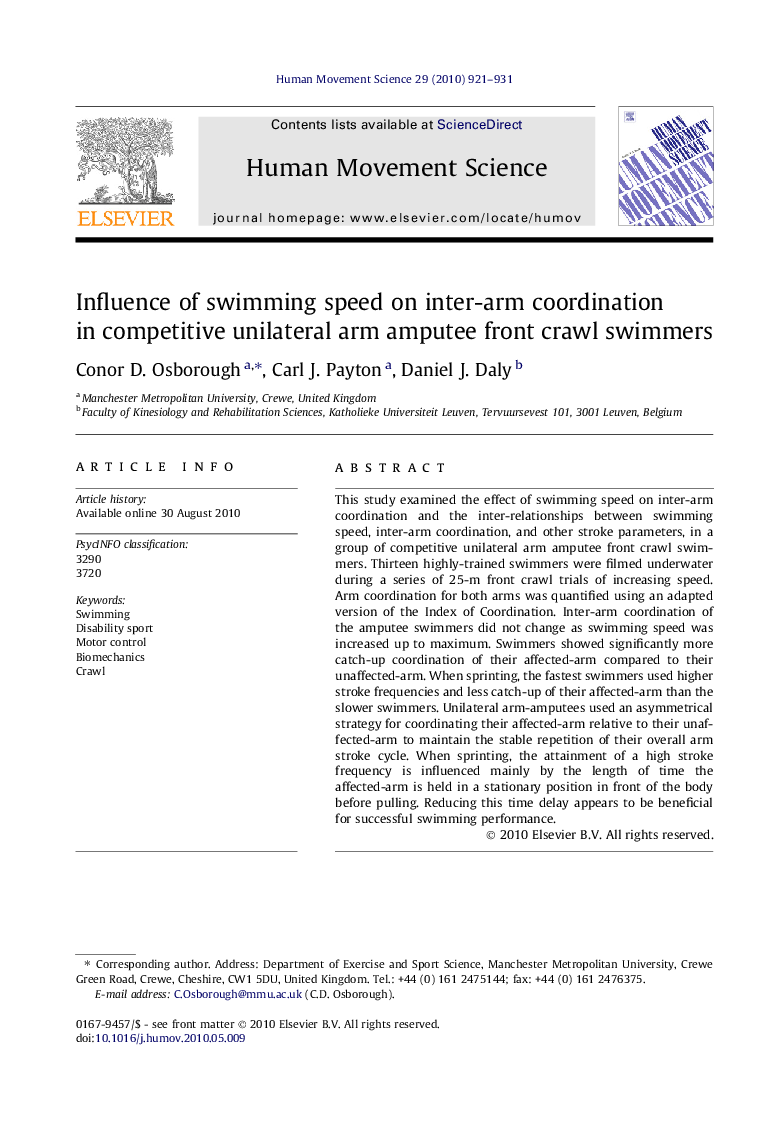| Article ID | Journal | Published Year | Pages | File Type |
|---|---|---|---|---|
| 928634 | Human Movement Science | 2010 | 11 Pages |
This study examined the effect of swimming speed on inter-arm coordination and the inter-relationships between swimming speed, inter-arm coordination, and other stroke parameters, in a group of competitive unilateral arm amputee front crawl swimmers. Thirteen highly-trained swimmers were filmed underwater during a series of 25-m front crawl trials of increasing speed. Arm coordination for both arms was quantified using an adapted version of the Index of Coordination. Inter-arm coordination of the amputee swimmers did not change as swimming speed was increased up to maximum. Swimmers showed significantly more catch-up coordination of their affected-arm compared to their unaffected-arm. When sprinting, the fastest swimmers used higher stroke frequencies and less catch-up of their affected-arm than the slower swimmers. Unilateral arm-amputees used an asymmetrical strategy for coordinating their affected-arm relative to their unaffected-arm to maintain the stable repetition of their overall arm stroke cycle. When sprinting, the attainment of a high stroke frequency is influenced mainly by the length of time the affected-arm is held in a stationary position in front of the body before pulling. Reducing this time delay appears to be beneficial for successful swimming performance.
